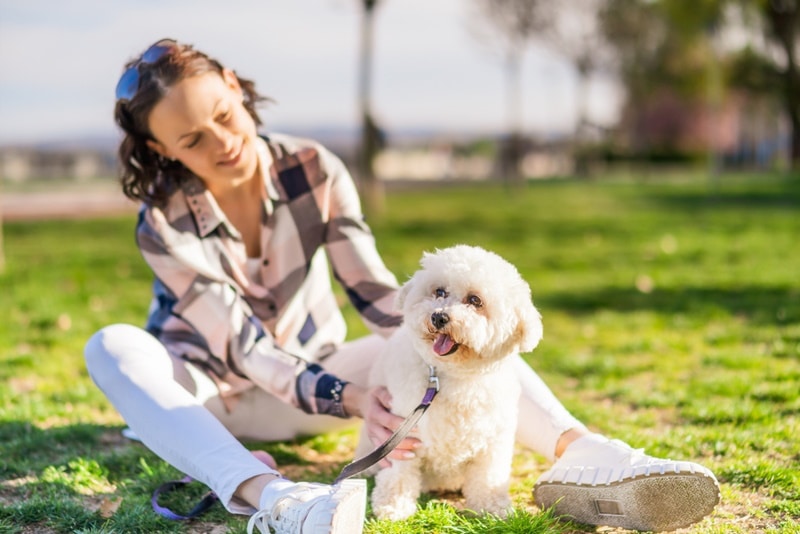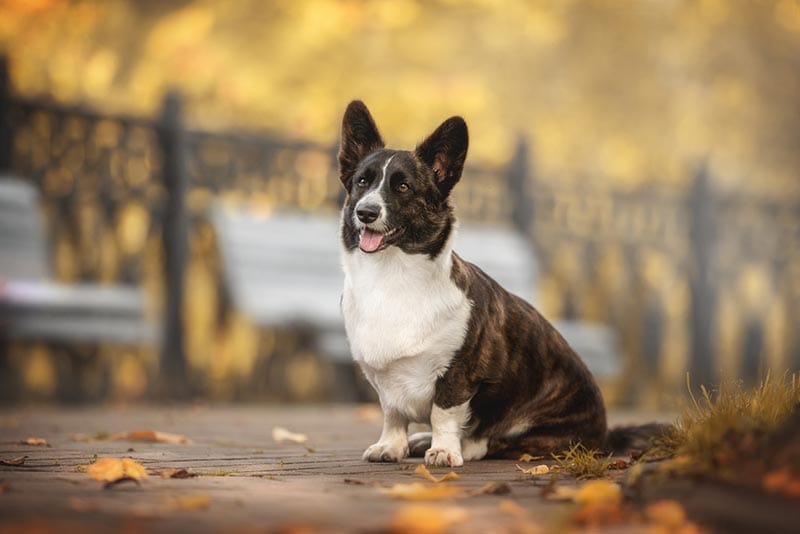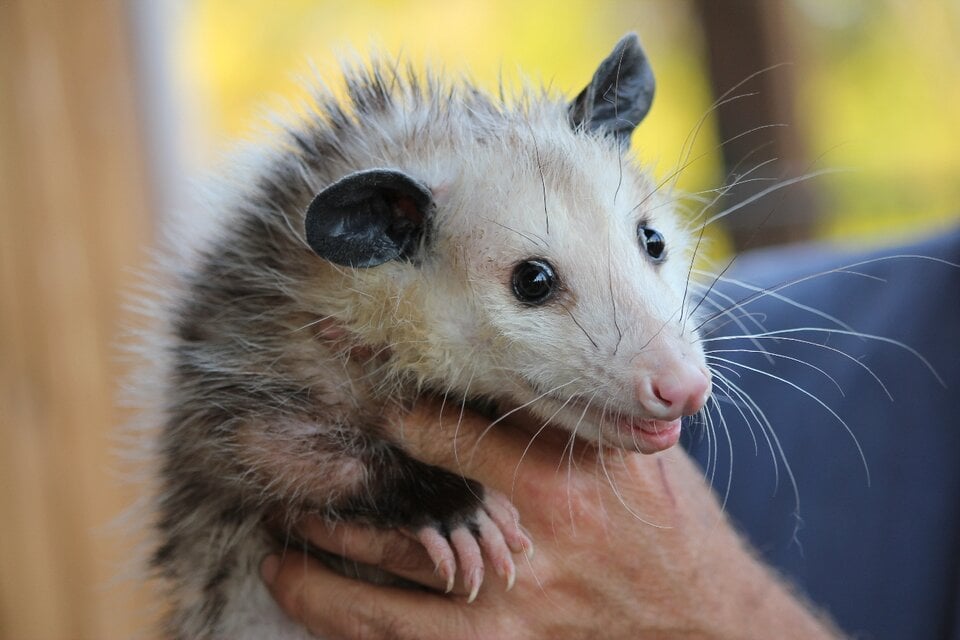Husky vs Shiba Inu: The Main Differences (With Pictures)
Updated on
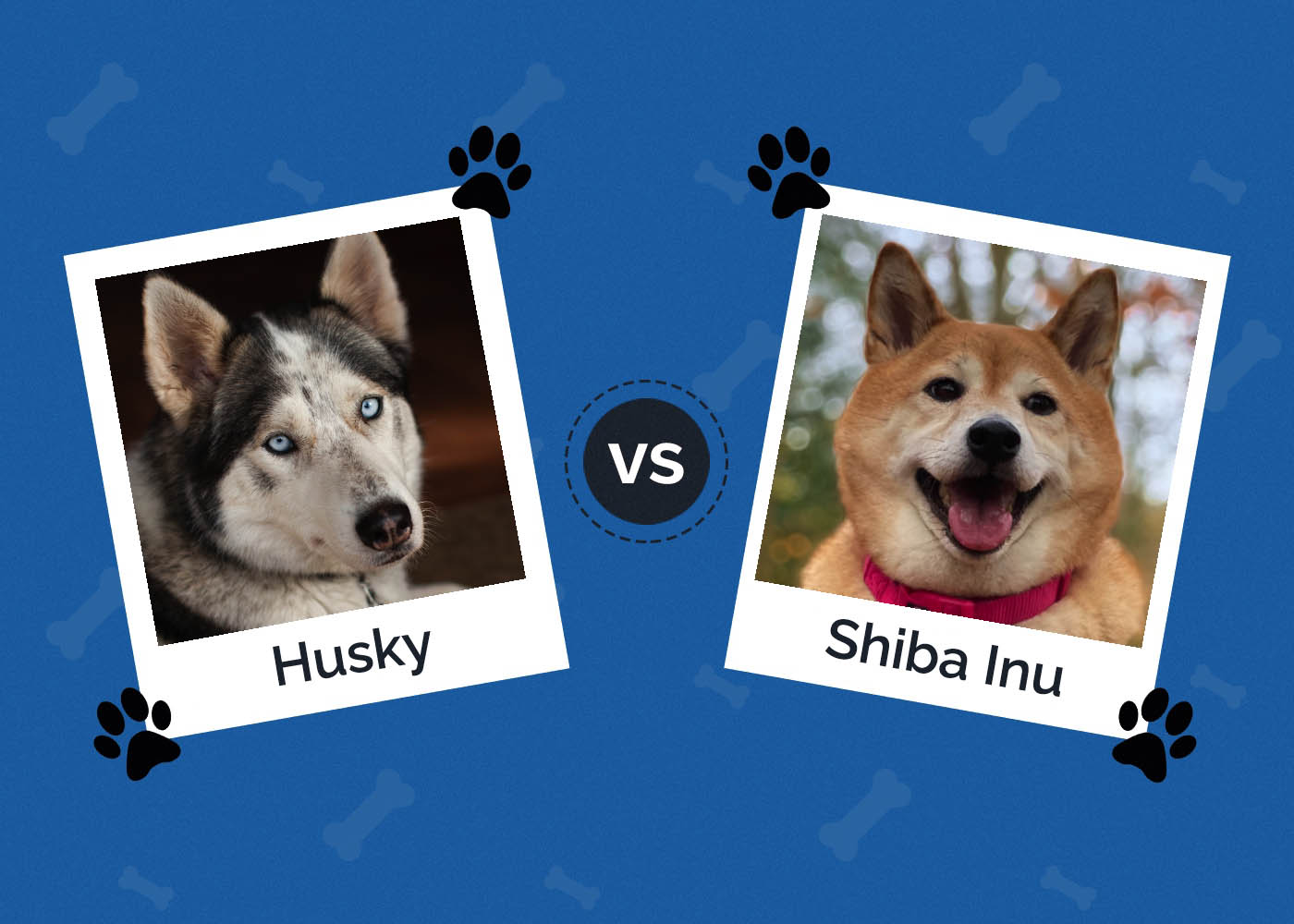
Deciding which dog breed is right for you can be quite a challenge. This kind of choice can put you at a stalemate and leave you stuck between two incredible breeds with no idea how to make a final decision. If you have found yourself stuck between the Husky and Shiba Inu, we’re here to help.
The Siberian Husky, or Husky for short, originated in frigid Northeast Asia and was bred specifically for sled pulling and companionship. They are known for their resemblance to wolves and for being very energetic, athletic, and built for harsh winter conditions.
The Shiba Inu, on the other hand, originated in Japan and was bred for hunting various types of game. They are alert, attentive, watchful, and independent and capture the hearts of many with their agile nature and fox like appearance. So, which one is best suited for you? Let’s learn more.
Visual Differences
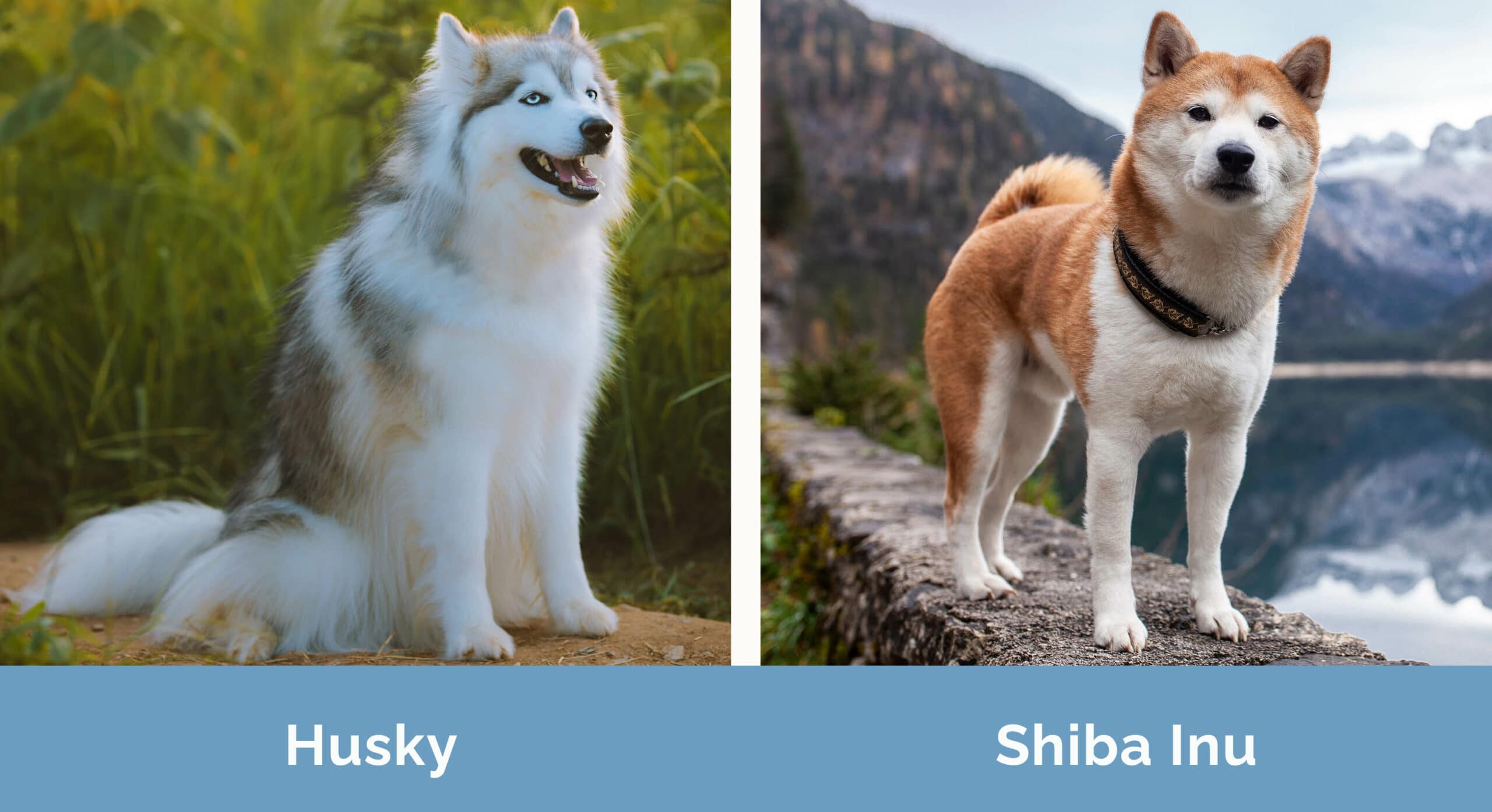
At a Glance
- Average height (adult): 20–23½ inches
- Average weight (adult): 35–60 pounds
- Lifespan: 12–14 years
- Exercise: 1+ hours a day
- Grooming needs: Moderate
- Family-friendly: Yes
- Other pet-friendly: Often
- Trainability: Outgoing, loyal, mischievous, energetic, independent
- Average height (adult): 13 ½– 16 ½ inches
- Average weight (adult): 17–23 pounds
- Lifespan: 13–16 years
- Exercise: 45+ minutes a day
- Grooming needs: Moderate
- Family-friendly: Yes
- Other pet-friendly: Sometimes
- Trainability: Active, alert, intelligent, independent
Husky Overview
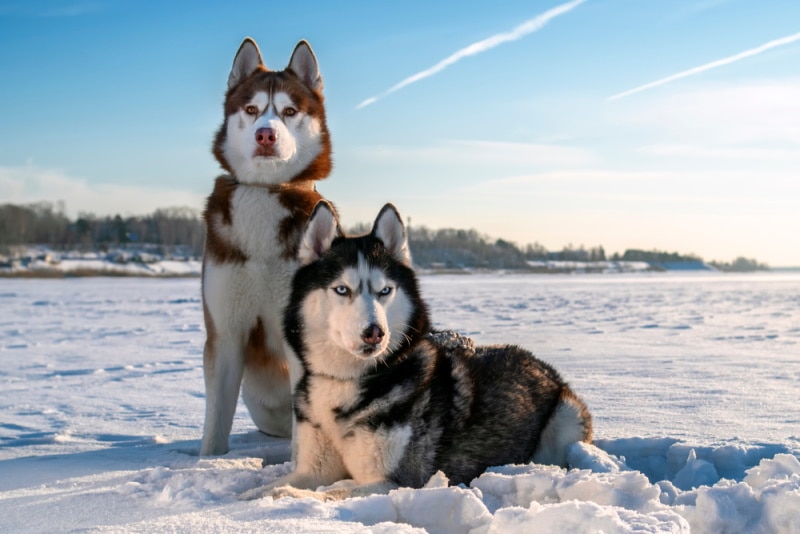
Appearance
Huskies are medium-sized dogs with a thick double coat, erect ears, and almond-shaped eyes that are either brown, blue, and occasionally one of each. They are very wolf-like in appearance and look very similar but are much smaller than their close relative, the Alaskan Malamute.
- Agouti and White
- Black and White
- Gray and White
- Red and White
- Sable and White
- White
- Brown and White
- Black, Tan, and White
- Black
- Piebald
- Saddle-Back
Personality
Huskies are an incredibly friendly, outgoing, and independent breed with seemingly endless energy. They are well known for being extremely vocal and will “talk” often through a combination of whining, screaming, howling, and yelping.
This playful breed is very affectionate with their family and often great with children of all ages. They don’t make ideal watchdogs, as they are very open to strangers. Though they require a lot of physical and mental stimulation, they are highly adaptable and can do well in a variety of living environments, even apartments, if their daily needs are met.
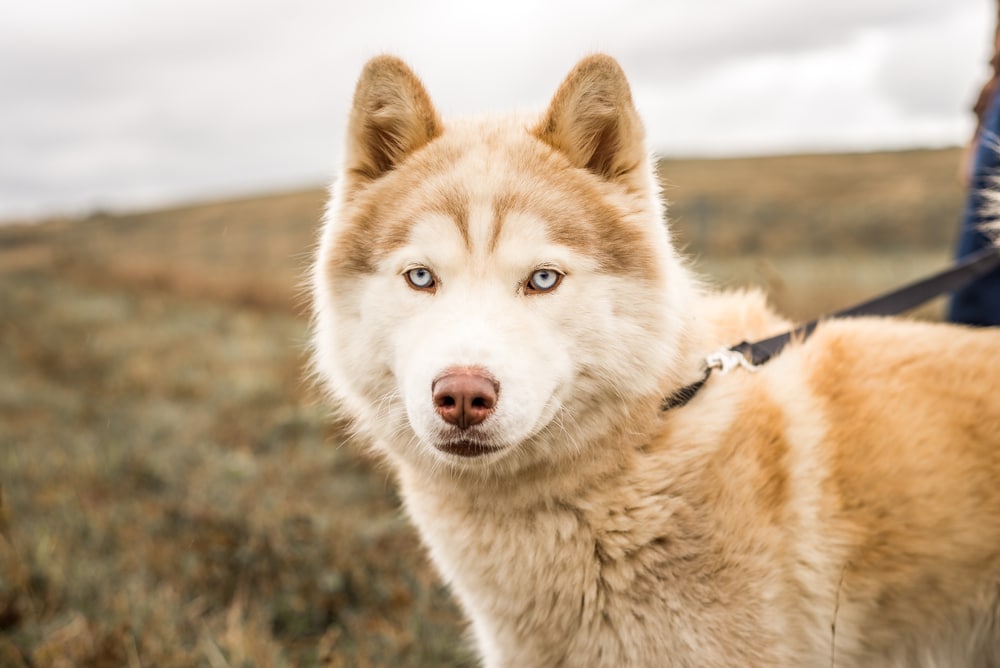
Exercise
This breed is an incredibly active and athletic working breed that will thrive on having a job to do. They should get at least 1 hour of exercise daily, but ideally closer to 2 hours. This is not going to be a breed well-suited for those that don’t have the time to dedicate to their dog’s needs. If their exercise needs aren’t met, they can be extremely destructive.
These dogs were bred to run, so they make great hiking or running companions and will enjoy doing various games and activities. Keep in mind that Huskies do not enjoy being cooped up, they are incredible escape artists and will stop at nothing to escape your fenced in yard and go out on their own adventure.
Husky owners will need to go out of their way to ensure the security of any fencing and be very cautious about ways their dog can escape. They should always be kept on a leash when out and about, as this is not a breed that will stick by your side if given any kind of freedom.
Training
Huskies are not very easy to train and can be quite a challenge for first-time dog owners. They are bred to be independent and to pull sleds over long distances rather than work closely with their owners. Athletic ability and endurance are their strong points, and aiming to please their handler is not as much of a priority when compared to other breeds.
Training will require a lot of patience and consistency on the owner’s part. Positive reinforcement is key to a successful training regimen and any Husky owners struggling to train their dog should reach out to a professional trainer. Always start training as soon as possible and keep sessions limited to 15 minutes per day.
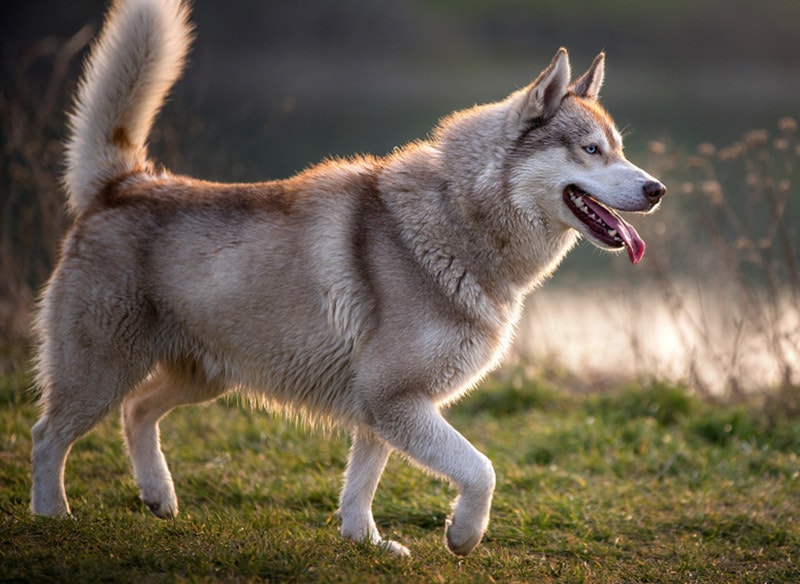
Diet
Like any other dog, Huskies should be fed high quality dog food that is appropriate for their age and activity level. A nutritious, well-balanced diet is key to maintaining healthy skin and coat, optimal immunity, and great overall health.
Owners may opt to adjust the amount of protein in their diet based on how active their dog is. Working dogs that are used for sled pulling in harsh winter conditions will require higher levels of protein than your average house pet.
Health
The Husky is a relatively healthy breed with a lifespan of up to 14 years. They do have a predisposition to certain health conditions such as cataracts and hip dysplasia, so it’s important to only purchase from a reputable breeder that has done the proper health screenings for their breeding program.
As with any dog, they should receive regular veterinary checkups and be kept up to date on any necessary vaccinations and preventative medication.
Grooming
Huskies have a dense double coat that is built for the harsh winter weather conditions of their homeland of Siberia. For skin and coat health, and to keep control of shedding, weekly brushing can be implemented. Huskies are very clean dogs that will do a lot of self-grooming, much like a cat.
They have both guard hair that helps repel water and dirt and an undercoat for insulation. The undercoat is shed seasonally, twice per year. This seasonal shedding is intense, so owners should expect to be covered in hair and prepared to do much more bushing during this time.

Suitable For:
Huskies are best suited for active owners and families that have the time and energy to meet their needs. They are typically great with children of all ages and will love expending energy together during playtime. Huskies are built to work as a team with other dogs, so they often get along great being part of a family with other pets in the household, especially when raised from a young age.
Any family wanting to add a Husky should deeply consider their desire to escape and explore and be prepared to keep them secure as well as understand that they can be very destructive if their mental and physical needs are not met.
Shiba Inu Overview
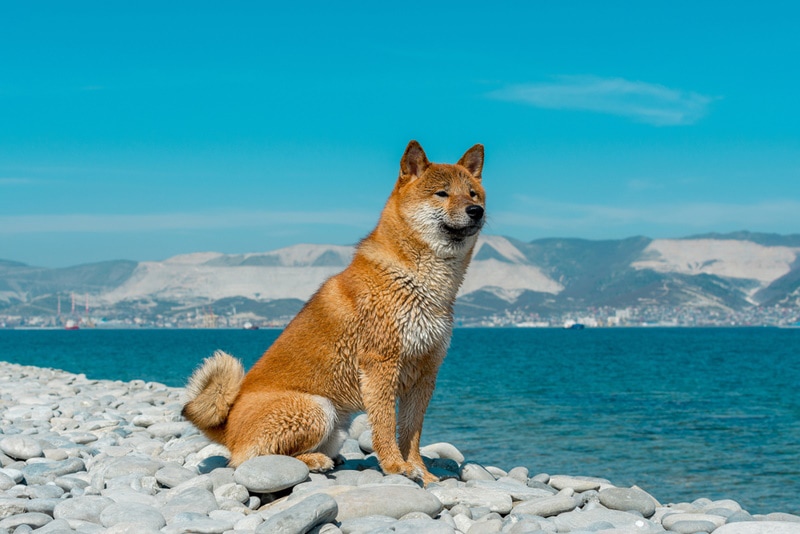
Appearance
The Shiba Inu is a small to medium sized dog with a compact body, double coat, erect ears, and a curled tail. They have a very agile gait and have more of a fox like appearance. They come in four different coat colors, all of which have white markings except for the cream.
- Cream
- Red
- Red Sesame
- Black and Tan
Personality
Shiba Inus are a very confident and independent breed. They are active, alert, and lively and will be very affectionate toward their owners. They form strong bonds with their people and often suffer from separation anxiety when they are away.
Originally used for hunting both small and large game, this breed has very strong prey drive and can be territorial and wary of strangers, making them great watchdogs that will often only bark when necessary.
Shibas aren’t known for being great with other dogs and their high prey drive doesn’t make them ideal for homes with smaller pets like cats. It’s best to socialize them early on and introduce them to other animals starting from a young age.
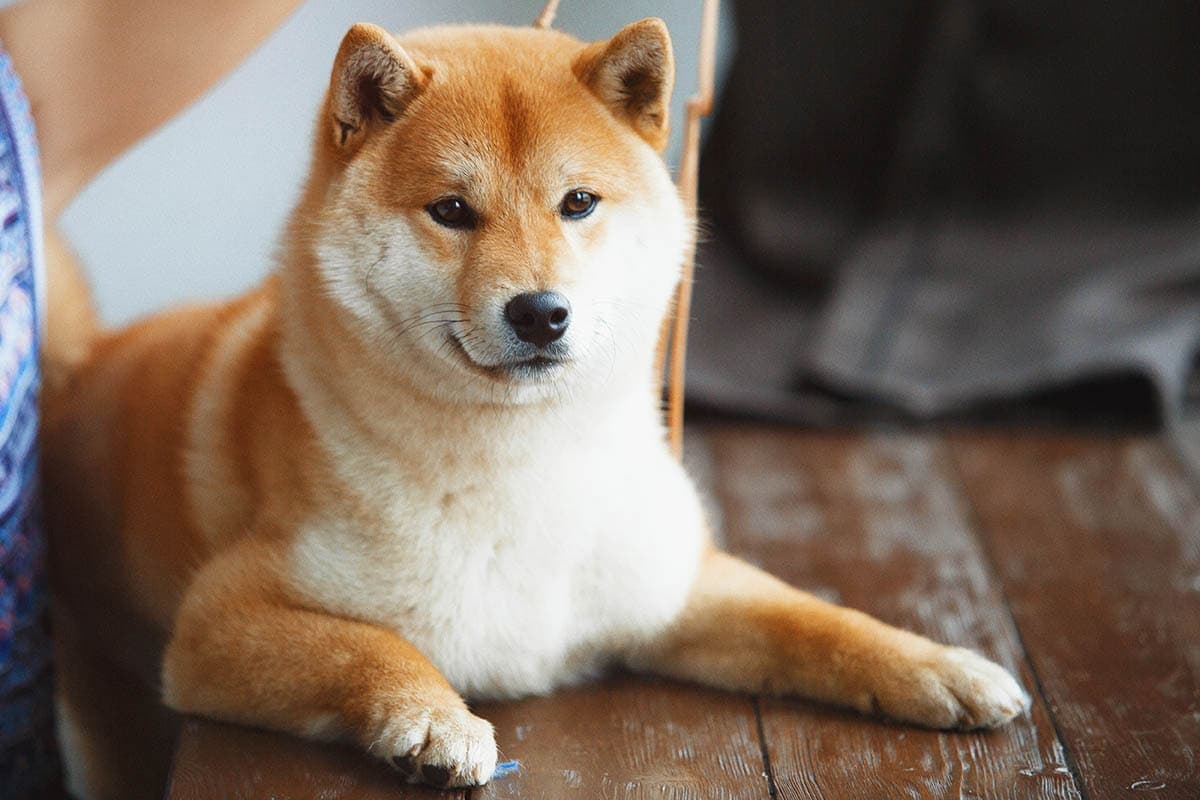
Exercise
Shiba Inus have moderately high energy levels and love to go out for daily walks. They also make great hiking companions and will enjoy playtime with their owners. They are intelligent, so it’s a good idea to keep them mentally stimulated with various types of toys and games.
Owners should expect to dedicate about 45 minutes or more per day to their Shiba Inu’s exercise needs. They may not be as destructive as some other breeds, but that doesn’t mean they won’t be destructive if their needs aren’t met.
Their independent nature and natural hunting drive makes them more likely to be escape artists. They should never be trusted off leash and the owner should prepare to keep them well secured.
Training
The Shiba Inu isn’t a breed that is going to be easy to train. Their independent nature can make it quite a challenge and owners should be prepared to practice patience, understanding, and consistency. Positive reinforcement methods are best used when training any dog.
Training should start early on and remain consistent. While they may be difficult to train overall, they are very clean dogs and potty training is typically easier. They aren’t going to be ideal for first-time owners that lack experience.
Diet
The Shiba Inu should be fed high-quality dog food that is ideal for their age and activity level. Like with any dog, a well-balanced, nutritious diet is important for maintaining optimal health. If owners run into any questions regarding their Shiba’s diet, they should reach out to their veterinarian for advice.
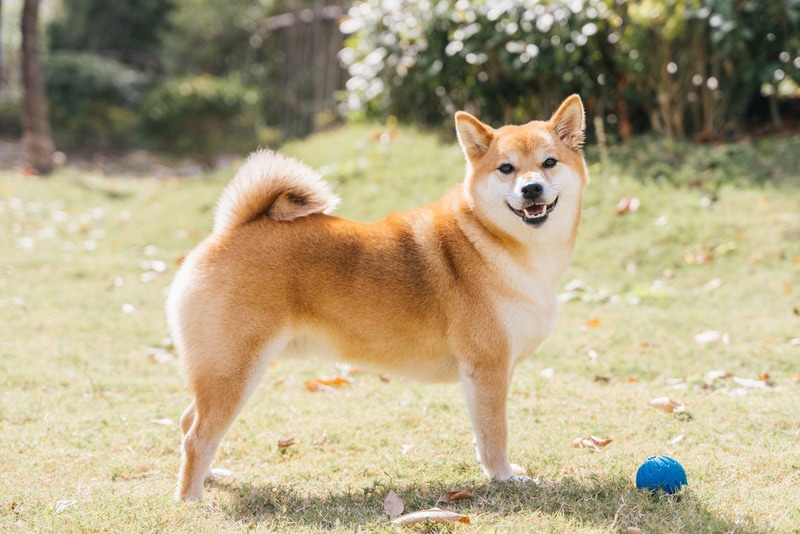
Health
Though Shibas have longer than average lifespans, like most purebreds, they are prone to developing certain health conditions. Allergies are among the most common health ailments for this breed, as well as patellar luxation, hip dysplasia, and hereditary eye issues like cataracts.
Finding a reputable breeder is very important, as they will not keep dogs that suffer from allergies within their breeding stock. They will also perform the necessary health screenings to minimize the chances of genetic health conditions being passed down.
Grooming
Shiba Inus will need their double-coats to be brushed on a regular basis. Once per week is typically fine to keep control of shedding and optimize skin and coat health. These dogs are very catlike in their grooming habits and are known for being very clean and working to maintain their own coats.
Like any double coated breed, they will go through biannual shedding in the spring and fall, where their undercoat will be blown causing way more fur around the home than usual. Owners should be prepared for extra brushing and grooming during these seasons.

Suitable For:
Shiba Inus are well suited for experienced dog owners and families of older children. Their self-willed nature means they can do well as the only dog in the household. They are moderately adaptable and can do well in a variety of settings, including apartment living if exercised regularly.
Key Similarities
- Independent
- Intelligent
- Difficult to train
- Affectionate with family
- Self-grooming with moderate grooming needs
- Double coated and will shed year-round but more intensely twice per year
- Predisposed to eye problems and hip dysplasia
- Known for being escape artists
- Should not be trusted off-leash
- May be destructive when left alone
Key Differences
- The Husky was bred for pulling sleds, while the Shiba Inu was bred for hunting
- Huskies are more friendly and outgoing while Shiba Inu is more alert and watchful
- Huskies are more adaptable while the Shiba Inu is only moderately adaptable
- The Husky has much higher energy levels and more intense exercise needs
- Shiba Inus only bark when necessary while Huskies are a very vocal breed
- Shiba Inus are more prone to suffer from allergies
- Huskies are often great with children of all ages while the Shiba Inu does better with older children
- The Shiba Inu has a strong prey drive and isn’t always great with other pets while Huskies often do well with other animals, especially dogs
- Huskies are larger with more coat color and marking variations
- The Shiba Inu is more foxlike while the Husky is more wolflike
Which Breed Is Right for You?
Only you can decide which of these two breeds is going to be best suited for you and your lifestyle. When it comes to bringing a dog into your family, it is important to understand all aspects of the breed so that you can determine whether it’s a good fit.
The Husky and the Shiba Inu may have some similarities, but they also have some significant differences that could mean the difference between compatibility with certain people. The best way to help you decide the best breed for you is to do your research on all the possibilities and ask yourself the following questions:
- What am I looking for in a dog?
- Is this breed compatible with my lifestyle or any potential changes in my lifestyle?
- Am I compatible with this breed’s general personality traits?
- Can I commit to the exercise and mental stimulation needs for this breed?
- Are the potential health issues something I am prepared to handle financially?
- Am I prepared to handle the grooming needs and shedding amount of this breed?
- Does this breed seem like a good fit, or should I look for something more compatible?
Whichever breed you end up deciding on, both of these breeds make a great choice for the right family in the right environment for them.
See also:
Featured Image Credit: (L) Regular Man, Unsplash | (R) Charlotte Rush, Unsplash




